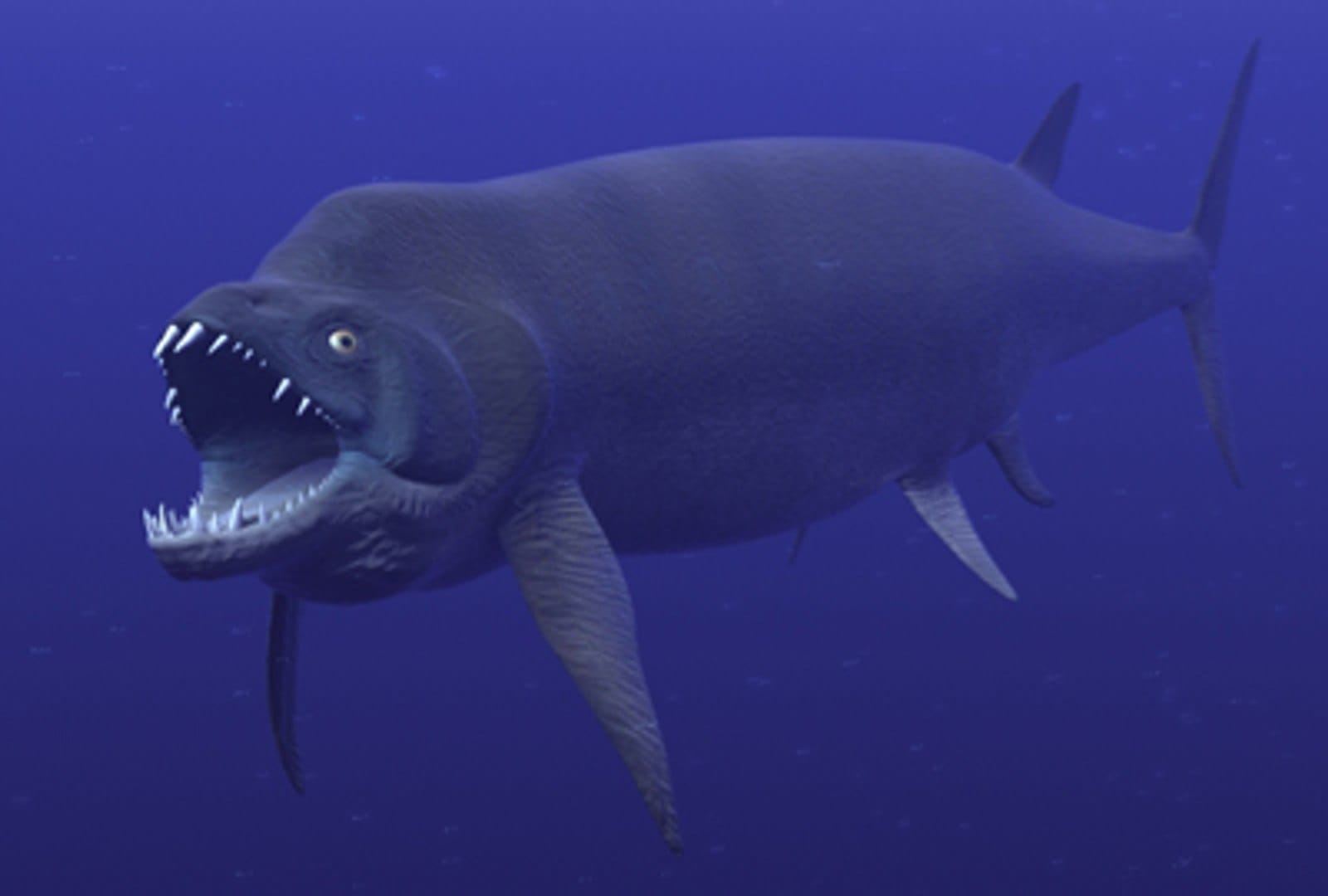Imagine a time when the Earth’s oceans teemed with creatures more monstrous than myth. Among them swam Xiphactinus, a behemoth of the deep, a predator whose very name — meaning “sword-ray” — conjures images of its most formidable weapon: a jaw bristling with razor-sharp teeth, some as long as a human finger. This was no ordinary fish. This was the apex predator of the Late Cretaceous, a ruler of its domain, and a creature whose fossilized remains continue to captivate our imaginations millions of years later.
A Fish Out of Time: Xiphactinus’ Reign
Spanning the Late Albian to the Late Maastrichtian stages of the Late Cretaceous Period (approximately 112 to 65 million years ago), Xiphactinus patrolled a vast inland sea known as the Western Interior Seaway. This massive body of water, which once bisected North America, provided the perfect hunting grounds for a creature that could reach lengths of up to 20 feet — longer than most cars on the road today!
The “Fish-Within-A-Fish” and Other Fossil Tales
Paleontologists have unearthed a treasure trove of Xiphactinus fossils, each offering a glimpse into the life and death of this ancient predator. One of the most extraordinary discoveries, unearthed by George F. Sternberg, is the “fish-within-a-fish” fossil. This remarkable specimen, on display at the Sternberg Museum of Natural History in Hays, Kansas, features a 13-foot Xiphactinus with a nearly complete 6-foot Gillicus arcuatus — another predatory fish — lodged in its stomach. This snapshot of a prehistoric drama suggests that Xiphactinus was a voracious predator, often swallowing its prey whole. However, this feeding strategy may have also been its downfall, as the Gillicus’s desperate struggle might have ruptured an organ within the Xiphactinus, leading to its demise.
Other fossil finds reinforce the image of Xiphactinus as an apex predator. Fossilized remains of various fish, and even some marine reptiles, have been discovered within Xiphactinus skeletons, painting a vivid picture of its diverse diet.
Even Kings Have Enemies: The Predators of Xiphactinus
Despite its size and power, Xiphactinus was not invincible. Fossilized evidence suggests that even this king of the seas could become prey to even larger and more formidable creatures: sharks. Giants like Cretoxyrhina and Squalicorax, two of the largest sharks to have ever existed, likely challenged Xiphactinus for dominance in the Late Cretaceous oceans. One compelling piece of evidence resides in the University of Kansas Museum of Natural History: a Xiphactinus fossil found within the skeletal remains of a massive Cretoxyrhina.
The End of an Era: The Extinction of Xiphactinus
Around 66 million years ago, a cataclysmic event brought the reign of the dinosaurs — and countless other species, including Xiphactinus — to an abrupt end. The most likely culprit? A massive asteroid impact that triggered widespread environmental devastation, including global cooling, ocean acidification, and widespread wildfires. This catastrophic event, known as the Cretaceous-Paleogene extinction event, forever altered the course of life on Earth.
While the asteroid impact is widely believed to be the primary driver of Xiphactinus’ extinction, some scientists speculate that its specialized diet may have also played a role. Could this apex predator, accustomed to swallowing its prey whole, have been unable to adapt to the sudden collapse of marine ecosystems and the resulting decline in large prey? The exact reasons remain a subject of ongoing scientific investigation.
Xiphactinus: A Legacy in Stone
Today, Xiphactinus continues to captivate our imaginations, serving as a powerful reminder of the incredible diversity of life that once flourished in Earth’s ancient oceans. Its fossils, scattered across what was once the Western Interior Seaway, offer invaluable insights into the prehistoric world, providing glimpses of a time when giants ruled the seas. From its formidable jaws and teeth to its massive size and predatory prowess, Xiphactinus stands as a testament to the power of evolution and the awe-inspiring creatures that have shaped our planet’s history. Perhaps one day, new discoveries will unlock even more secrets of this prehistoric giant, further enriching our understanding of life in the Cretaceous seas.
If you’re looking for more incredible creatures, be sure to check out our website where we have zorse for sale. Just as Xiphactinus dominated the Cretaceous oceans, these majestic animals, with their unique blend of strength and agility, are sure to reign over your heart. And if you’re interested in more thrilling encounters with the wild side of nature, don’t miss our article on the Zambezi shark attack — a chilling tale of survival that will leave you breathless.
- Unveiling Bernhard Caesar Einstein’s Scientific Achievements: A Legacy in Engineering - July 15, 2025
- Uncover who is Jerry McSorley: CEO, Family Man, Business Success Story - July 15, 2025
- Discover Bernhard Caesar Einstein’s Scientific Contributions: Unveiling a Legacy Beyond Einstein - July 15, 2025















